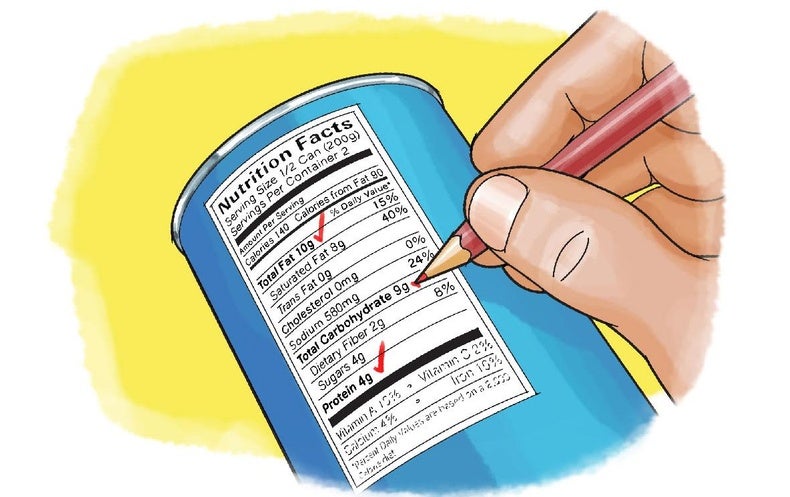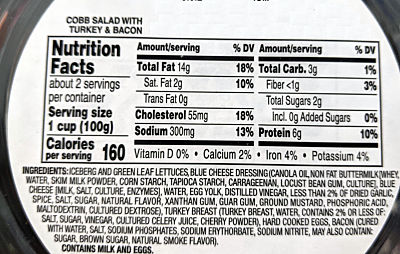
If you're working on reaching your goal weight quickly and efficiently using the ITG Diet Plan, you may have been learning the importance of understanding nutrition labels and how to decipher them. Over the years I've spent coaching the program, I certainly have learned a lot about labels myself. Remember, years ago, we were taught how bad fat was for us? "Fat will make you fat!" Starting in the 1980s and continuing throughout the 1990s, "reduced fat" and fat-free foods gained their foothold in our lives. The low-fat diet was born. However, looking back now we can start to see that fat isn't quite as bad for us compared to what was being pumping into these foods to add flavor without that fat: sugar and salt.
In 1980, the rate of adult obesity was 13.4%. As of 2020, the rate stood at a whopping 42.4% of adults in the US! So why has the world been gaining weight consistently throughout all these years, if fat is so bad for us and we've been avoiding it? There are a lot of factors: a diet high in processed foods containing lots of sugar and salt, giant portion sizes, and pure genius when marketing a sugary food as healthy choice ...are just a few of the reasons. The key to understanding how foods affect you? Look at, analyze, and understand the nutrition labels.
My inspiration for this blog came today, when one of the first clients I worked with brought in the nutrition label for a salad that she had been buying from a grocery store. She ate at least one salad, if not two, every day. She felt like she hadn't lost weight for the week, so she decided to bring it in for me to take a look. I did, and I gasped. Little did she know, each of these small bowls of salad were actually two, yes 2, portions of salad. So when she ate two of these salad bowls a day, she needed to multiply the nutrition facts by four.

Of course, this type of salad would never be allowed on the program, but she did her best to remove some of the toppings that were off-program. Yet still, she was eating roughly 640 calories, 56 grams of fat, 220 mg of cholesterol, 1200 mg of sodium, 12 grams of carbs, and 24 grams of protein. Combined with other vegetables, ITG foods, and dinner protein, she was going well out of the range of nutritionals for being compliant with the ITG Diet Plan.
Remember, if you are in ketosis and eating too much fat (also known as "dirty keto"), your body will forego the burning of stored body fat in order to begin processing the new fat coming in through the mouth. This will slow and eventually stall your weight loss (most people who do regular keto diets complain that this happens to them). The high levels of sodium make your body retain water in an unhealthy way, so you feel bloated and your clothes feel tighter.
Needless to say, my dieter has learned something new this week. She is focusing more on getting her own healthy salads made at home (as she can control all ingredients). She'll take them with her in her ITG Survival Kit each day instead of hoping to make the right decision with store- and restaurant-bought foods.
We want you to learn how to look at a nutrition label and decide whether you'll buy and eat a product, or if you'll gasp like me and put it back on the shelf. Remember, in Step 1, we are going back to the basics to lose the weight. Stay away from processed foods from the store or restaurants. If you think an item may be healthy but aren't quite sure, talk to your Coach before you eat it. I tell all my dieters to assume that I'm going to say "No!" Stick to the list of approved foods to reach that goal as quickly as you can. You'll get these fun foods back once you're there, plus you'll have learned how to enjoy them responsibly!
Here are some of my tips to quickly scan a label for the important stuff:
1. Most importantly, take a look at that serving size. Most foods these days are packaged in large containers or bags, so serving sizes will sometimes be 2, or 2.5, or even more. It's also good to remember that the serving size printed on the label is what that particular company decided on, so eating 17 crackers because they say so doesn't mean you should! (ITG recommends, in Step 3, 4-6 crackers for a carb portion.) If the serving size is going to be so small that I would barely enjoy eating such a small amount, or won't feel full by eating it, I put it back.
2. Look at the total carbs. We don't use net carbs at ITG, because that is playing some fuzzy math. There's soluble and insoluble fiber that are carbs, and yes fiber can slowly raise your blood sugar. My rule of thumb with processed carbs plays off of ITG Foods - ITG Limited Foods are usually 12 or more carbs (once per day) and Non-Limited Foods are under 12 carbs. In the Limited range, I play it safe and try to avoid those items (especially if I eat an ITG Bar that day). Once foods begin hitting 18 or more carbs per serving, I put it back.
3. Check out how much sodium the food contains. I don't know anyone who likes that puffy, bloated feeling, and you'll want to be keeping your sodium count for the day around 2000 mg or less. Sea salt is a much healthier alternative than purely processed sodium, so use it instead when you cook. You'll need a little salt on the diet to maintain your healthy water levels, just don't go overboard. Retaining water due to eating lots of sodium rich foods will keep that scale from moving like you want. Too much sodium in the food means I put it back.
4. Fat grams do matter, especially when you're trying to lose weight in Step 1. Again, too much fat in the mouth means you just won't burn much off your body. You'll probably still be in ketosis, but you won't see that scale move like you wanted each week. Other foods, like olive oil for cooking or for salad dressing, are pure fat and also need to be treated the same way. Use a spray oil that you can control and use much less of than just pouring fat on everything. If the fat grams are more than a couple tablespoons of olive oil (extra virgin contains 14 grams of fat per tablespoon), I put it back.
5. Don't read the words on the front of the package, it's just marketing. When they say "30% Lighter!" that could mean it's 30% lighter in color compared to the previous version of the product. No sugar added? That means they didn't add any more sugar than it already had, which could be a lot of sugar. Too many buzzwords that don't line up with those nutrition facts? You got it... I gasp and put it back.
Keep following the ITG Blog and also make sure to Like and Subscribe to the ITG Diet Facebook page for more tips, tricks, and advice from us here at ITG!


